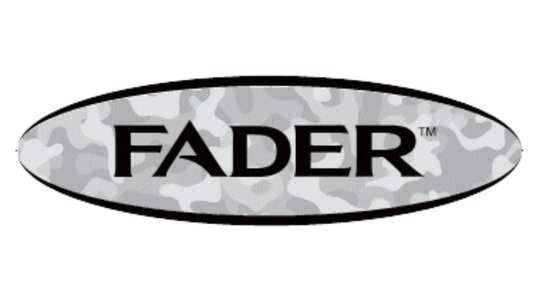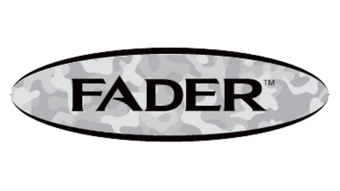Media
We regularly update this page with our on going research, please check back to see what's new!
Why Fader/Sharkview is the Most Viable Method of Avoiding Shark Interactions
Limitations of Existing Shark Research:
Most research on shark behavior is conducted using chum, which consists of fish oil and blood. However, this method does not accurately replicate natural shark behavior, making it unreliable for predicting how sharks act in beach environments. Sharks use a combination of random searches and sense-directed strategies to locate prey. Once a potential target is identified, the shark assesses whether it is edible and can be captured before making an attack to subdue the prey.

Shark Sensory Mechanisms
Sharks rely on different senses at varying distances to locate prey:
-
Long-range detection: Smell and hearing are the primary senses used.
-
Mid-range detection: Electrical fields and the lateral line system are employed.
-
Close-range detection: Vision becomes critical, followed by taste during the final stages of interaction.
Vision plays a pivotal role in a shark's hunting success. It allows for rapid responses to changes in the prey’s position. Failed attacks often result from a shark losing sight of its target. Marine scientists have determined that shark vision is highly specialized, characterized by very high contrast with a blue or green hue. Additionally, sharks’ visual systems are adapted for low-light and murky water conditions, enhancing their hunting capabilities.
Mistaken Identity and the Role of Vision
Many shark attacks on humans occur because the shark mistakenly identifies a surfer as prey. In most cases, these attacks do not continue beyond the initial bite. This error in assessment underscores the importance of avoiding misidentification.
Camouflage is a common strategy used by prey animals to avoid predators. For instance:
-
Bottom-dwelling fish: These fish match the seabed to blend in.
-
Midwater fish: These species use silver, reflective scales to adapt passively to changing light and water colors, hiding at a distance and confusing predators at close range.

The Air-Water Interface and Sharkview Technology
At the interface of air and water, light behaves uniquely. The amount of light reflected increases as the angle of incidence moves away from vertical, creating an almost mirror-like effect. The reflected image appears at an opposite angle to the viewer. When water clarity is high and movement is minimal, the reflective effect is particularly strong.
Sharkview technology capitalizes on these principles. By helping an object blend into the water's surface and disguising its shape, Sharkview reduces its visibility to sharks. Specifically, Sharkview Phantom Surfboards use a specially engineered reflective film on the underside of the board. This film is designed with a specific range of reflective values and a pattern optimized for blending into the surrounding water. The board reflects the exact color and movement of the water at a reciprocal angle, dynamically adapting to environmental changes. This minimizes the distance at which the board can be detected and, even if noticed, presents an indistinct shape that does not invite further investigation.

Wetsuit Camouflage and Its Importance
Traditional black wetsuits are ineffective at avoiding shark detection. They create high contrast against the water’s surface or against light-colored surfboards. Similarly, colored wetsuits only match the water under certain conditions, offering inconsistent camouflage.
A more effective approach involves using greyscale patterns that blend better with the environment and break up the outline of the surfer. These patterns can mimic familiar shapes that sharks tend to avoid, further reducing the likelihood of an attack. A base camouflage gradient, combined with overlays of recognizable or deterrent patterns, can make the surfer less appealing as a target.

Comprehensive Benefits of Sharkview and Camouflage
The combination of Sharkview Phantom Surfboards and well-designed wetsuit camouflage offers a holistic solution:
-
Reduced Detection: The reflective board minimizes visibility by perfectly mirroring the surrounding environment.
-
Elimination of Interest: Camouflage disrupts the shark’s ability to identify the surfer as prey, reducing the likelihood of investigation.
-
Adaptability: The technology is effective across all geographic locations, water conditions, and times of day.
-
Non-Intrusiveness: Sharkview and camouflage do not interfere with the surfer’s performance or the board’s functionality.
-
Resistance to Habituation: Sharks cannot adapt to the reflective and camouflage effects over time.
By integrating these technologies, the risk of shark interactions is significantly minimized, offering surfers a practical and effective method to stay safe in the water.
Video Series:
Slow Approach
Great White Sharks Head North for Summer
From 2010 to 2014, helicopter surveys tracked juvenile Great Whites along NSW beaches, revealing how they hunt naturally in shallow waters. These observations directly inspired the FADER SharkView concept.
Brave Girl
Fader Blue vs Black Wetsuits
Sun Test
Sun test shows the surface of the water from underneath reflecting the rocks, then sea grass then in deeper water the blue. Our inlays and decals do the same. So no matter what the water colour is or what the bottom is made of the board will match at the time and also match any changes.
Fader Promo
Background information and some of the reasons behind our wetsuits produced @kianicoop and @laura.ausling for @uonsoci @uni_newcastle Wetsuit FADER 2mm featured designed by @gemmalee_suits.
Shark Aborting
This is the most important example of behaviour we observed. As the shark approaches the fish riding in on the wave to gain speed it at about 4m away aborts. Why? The fish are broken up, it would be a perfect time to single 1 out. But it doesn’t. It swims off. We strongly believe from this and other examples that as the wave lifted the fish their body angle in relation to the sun changes and for a split second the reflective scales made them to shark seem to disappear. To the shark the fish are no longer there. No fish no point so it swims on to look for other fish. We have many other examples that have convinced us that if we can not be seen there is not reason for a shark to approach.
Drone Fly Over
Find the shark. Ariel patrols and drones are easy when the water is clear or there's no wind chop and your flying over every 10 minutes. Each summer due to poor water its wasted for days or weeks at a time (we lost most of January one year). So if the water is clear, there's a little wind, its in school holidays and it's just flown over in the past 10 minutes yes you are a little safer. The rest of the time? Better to take shark safety out of the hands of Government and vested interest groups and make your own decisions.
Aerial Survey
It's vital for total concentration for aerial survey work. Any split second loss can lead to a missed shark and its easy to do. Even with the best conditions, experienced teams and regular patrols the shark that is a risk is unlikely to be seen before the event.



